Direct outlet toilets: device, advantages and disadvantages, tips for choosing
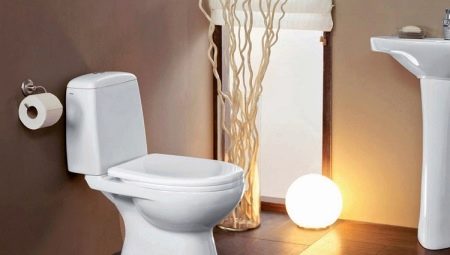
If you are starting a renovation in an apartment, then the choice of the type of toilet bowl by release is limited to the options for the mounted sewer system at home. But most often today you can find toilets with an oblique or horizontal outlet. There is also a third version of toilets - with a vertical outlet to the floor, but, most likely, it is relevant only for private houses or very old residential buildings. In new buildings, no one installs the sewerage system for toilets with vertical outlet.
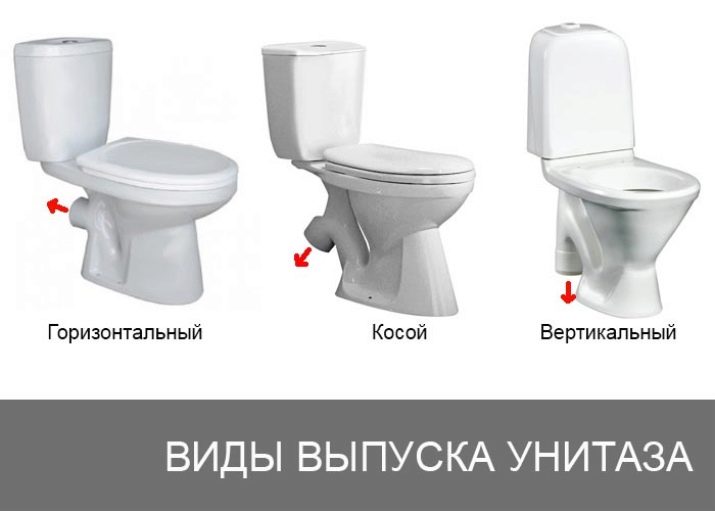
It should be noted that models of toilets with vertical and horizontal outlets are referred to as toilets with direct flush. Consider the features of toilets with a horizontal outlet due to their wide distribution. Now under the name "straight" they mean basically just a toilet with a horizontal outlet. It is also worth mentioning here the direct acting toilet with a vario release - This versatile device can be used with both vertical and horizontal outlets as required.
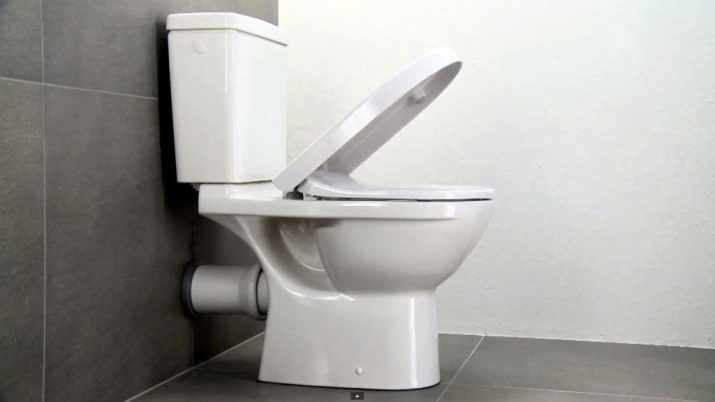
Device
The outlet of the toilet bowl is a branch pipe with a hole, which must be connected to the sewer pipeline by means of a coupling sleeve. Usually, on the sewer wiring opposite the toilet, a tee is already installed, which has its own branch pipe, to which the toilet outlet should be connected.
Modern toilet bowls, including those with horizontal outlet, have the same device: usually it is a compact toilet bowl that has a ceramic bowl and a lid and a cistern attached to its ebb. The tank contains:
- hole for water supply from the water supply system;
- overflow pipe brought into a common drain channel;
- float;
- flap valve;
- Exhaust valve;
- flush lever (button).
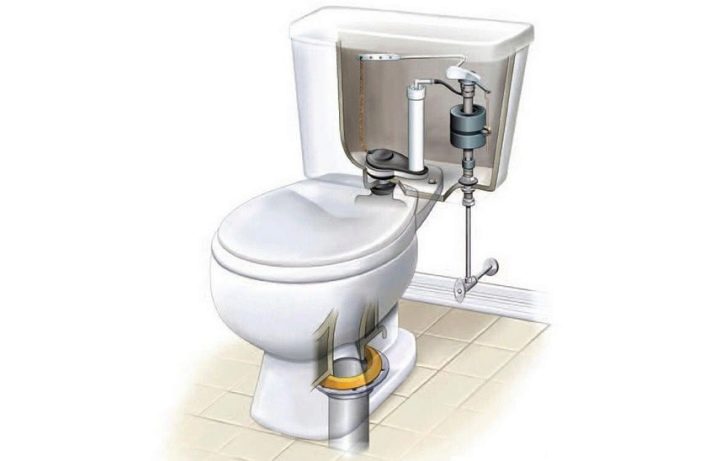
The bowl contains the following devices:
- flush gutter connected to the drain channel of the tank and distributing water around the circumference of the bowl;
- siphon;
- outlet channel (branch pipe).
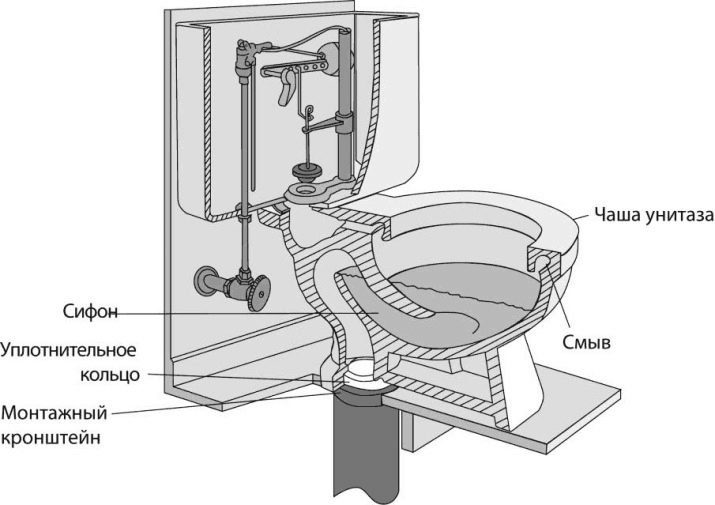
The bowls themselves, in addition to the angle of release, differ from each other in the external shape and the internal configuration of the shelf. Depending on the model, they are:
- disc-shaped, which are considered outdated and unaesthetic;
- visor - with an inclined shelf (slope either forward or backward);
- funnel-shaped - more modern options, in which, in fact, there is no shelf at all - the feces fall immediately into the water (although the anti-splash system is relevant here).
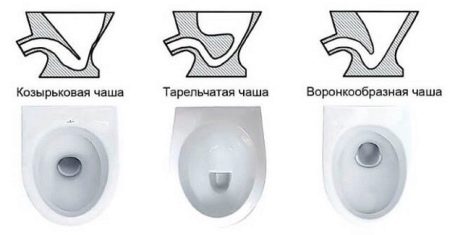
Advantages and disadvantages
To the advantages of horizontal (parallel to the floor) toilet models release includes the following features and factors:
- suitable even where there used to be a toilet bowl with an oblique outlet (that is, there is versatility);
- it is possible to connect not only to a horizontal sewer pipe, but also directly to a vertical riser using adapters;
- mounted close to the wall, without taking up extra space;
- low cost;
- wide range of products.

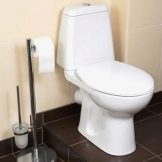
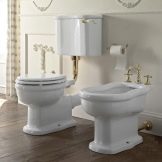
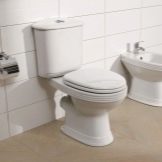
There are also many disadvantages:
- attachment of the installation site to one of the walls of the room - the one where the sewer pipeline passes;
- the relative complexity of installation, especially in terms of connecting the outlet to the sewer;
- thorough sealing of the joints of the outlet with the sewer main, the need for control at the first time after installation for the absence of leaks;
- the possibility of clogging the outlet channel.
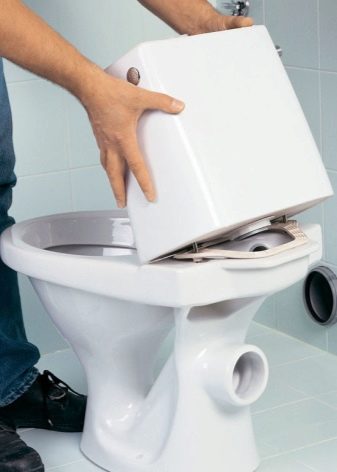

Which is the best way out: straight or oblique?
It should be noted that toilets with an oblique or horizontal outlet are in most cases interchangeable, so the difference between them is small. But if converting a straight model to an oblique one is completely easy, then doing it the other way around is much more difficult. To do this, you will have to organize an additional elbow, which complicates the design of the outlet, as well as the already complex process of sealing the joints (in the additional elbow, there is a high probability of residual water standing).
Besides, will not do without changing the installation location of the toilet in the event that the distance from the wall of the toilet with a horizontal outlet that stood before it was minimal. We'll have to prepare a new platform for attaching the bowl to the floor. In modern technology for the construction of residential buildings, the sewerage system is installed mainly under the toilets with an oblique outlet. Although another arrangement of the sewage system is gaining popularity - under the horizontal outlet toilets.
In any case, the ideal choice is one in which the type of toilet outlet corresponds to the sewer receiving device.
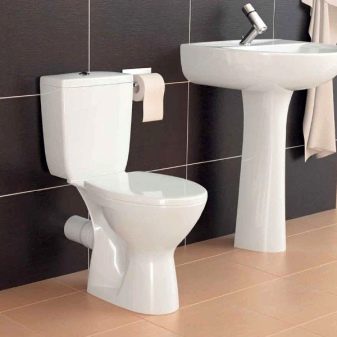
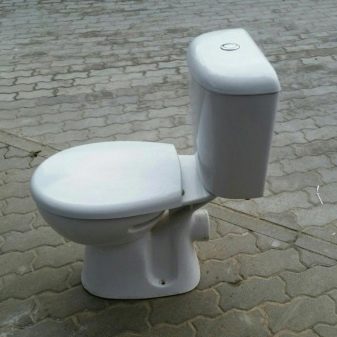
And if we compare the models with each other, without taking into account their interchangeability, then a toilet with an oblique release type is considered a more versatile system, since such a bowl can be connected to the sewage pipeline located in relation to it at an angle of 0 to 35 degrees. That is, some errors in the location of the sewer main are permissible, which is quite possible during the construction of high-rise buildings, when not everything turns out strictly according to the project as a result of previously unplanned circumstances.
Besides, the very process of installing a plumbing device with an oblique outlet is simpler, which is explained by the lack of a strict point for its installation and connection to the sewage system. This cannot be said about the analogue with a horizontal outlet - here the outlet pipe must be located with the connecting pipe on the sewer strictly opposite each other.
And also the fact that sewage does not linger in the inclined outlet, and in the straight horizontal, no doubt, some of them remain on the walls, in the joints, which eventually leads to clogging and complete obstruction of the pipeline.Direct-type toilets often have to be disassembled and cleaned.
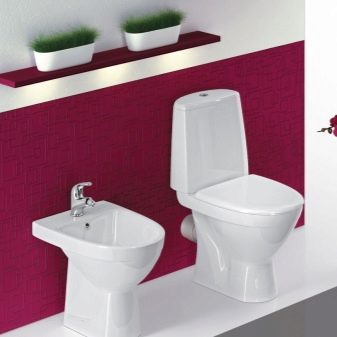
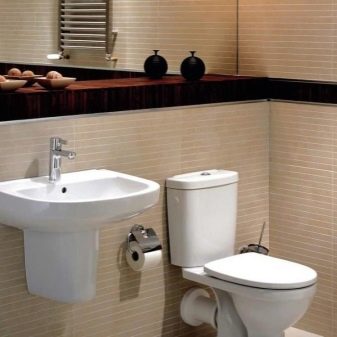
Varieties
Toilets with horizontal outlet are produced in a wide variety of modifications. Let's name the main models according to the place of installation.
- Outdoor. Conventional (everyone knows them) toilets both today and in the last century. Attached to the floor. Mostly compact toilets are being installed.
- Suspended. These models are wall-hung, have a high outlet and are divided into frame and block systems according to the method of fastening. All communications (and in some cases the tank) are hidden behind a false panel or in a wall niche. It is convenient to clean under these toilets, as they hang over the floor.
- Attached (wall-mounted)... They are popular recently. They are tightly mounted to the wall, while all communications, like those of suspended models, are hidden, and only the bowl remains outside. The difference from suspended ones is that the bowl is not suspended, but installed on the floor, like floor-standing toilet bowls.
Thus, these models can be considered a kind of symbiosis of the first two - floor and suspended.

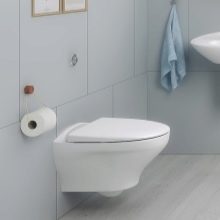
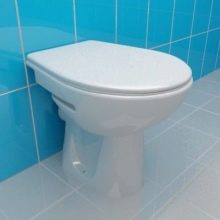
According to the design of the cisterns, the toilet bowls are divided into several varieties.
- With a high drain. The tank is wall-mounted and has a drain pipe. The model itself is archaic, found in old houses, however, such models, but slightly improved, can be found on sale. Sometimes they are also used in modern houses, where the decoration is designed in the so-called historical style. Quite noisy construction.
- Low drain. Standard flush system, in which a plastic or ceramic cistern is mounted low above the toilet and has a short flush pipe.
- Hidden cisterns. Built into the wall and closed with easily removable trim. Only the flush lever remains outside.
- Compact bathroom. The tank is attached to the bowl. The most common type of toilet today.
All models with cisterns attached to the wall are part of the hanging cistern group.
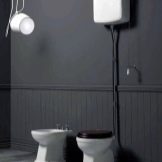
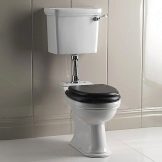
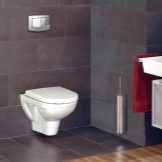
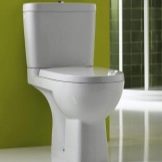
Dimensions (edit)
When choosing a toilet for your home by style, design, or simply by the color of the tiles, you should not forget about its size in relation to the area of the bathroom. This is of no small importance.
First, measure the depth of the room where the plumbing device will be installed, and divide this value in half - this will be the length of the horizon, or the border beyond which the toilet should not be taken out. Hence, you need to make a start when choosing plumbing. If the area of the toilet room is quite large, then such measurements are hardly worth thinking about, since you can choose not only a toilet bowl that is large in size, but also put a bidet next to it.
As for the height of the bowl, it all depends on personal preference and especially on the height of the person. It is recommended to focus on the tallest member of the family, since children grow up quickly, and the toilet is not placed for one year. According to GOST, domestic enterprises produce toilet bowls of the following sizes:
- for children's models - 33.5x40.5x29 cm;
- for adults (no shelf) - 40x46x36 cm;
- for adults (with a shelf) - 37x60.5x34 cm.
The first number in the dimensions indicates the height, the second - the length, the third - the width of the bowl.
And given the fact that there are many models of foreign production on sale, the standards of which do not correspond to our GOST, then the optimal dimensions of toilet bowls for most of our bathrooms have been calculated: 38x48x37 cm. For people who are heavy and tall, the length can be selected up to 60 and even 70 cm - there are also such models.
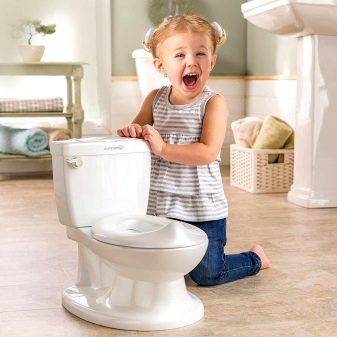
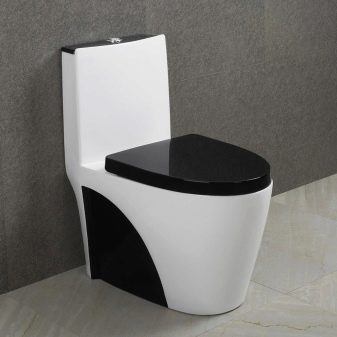
How to choose?
Of course, the choice of the toilet is a personal matter, depending on the taste and preferences of the owners themselves. Some people like compact models, others with a cistern hanging on the wall, and still others like corner options. As for the manufacturers, some buyers have a craving for German plumbing, others for Czech, and still others have nothing against domestic toilets, if only they work well.
But you can still recommend adhering to some criteria in the process of choosing toilets, so as not to be mistaken.
- If you choose high-quality and expensive plumbing, first of all, pay attention to the models of European and American manufacturers. There are very interesting examples of stone and even glass (of course, not transparent).
- Consult a professional plumber for the best toilet model.
- Before buying, measure the diameter of the sewer pipe to which you will need to connect the toilet.
- Decide for yourself what shape and color the new plumbing should be.
- If you want to purchase a siphon type of toilet bowl, then you should know that we do not sell such toilet bowls yet. Repairs can cost a lot of money, and some parts are at risk not to be found at all.
- Try to sit on the bowl of your choice to see if it is comfortable.
- Pay attention to the cleanliness and noise of the flush.
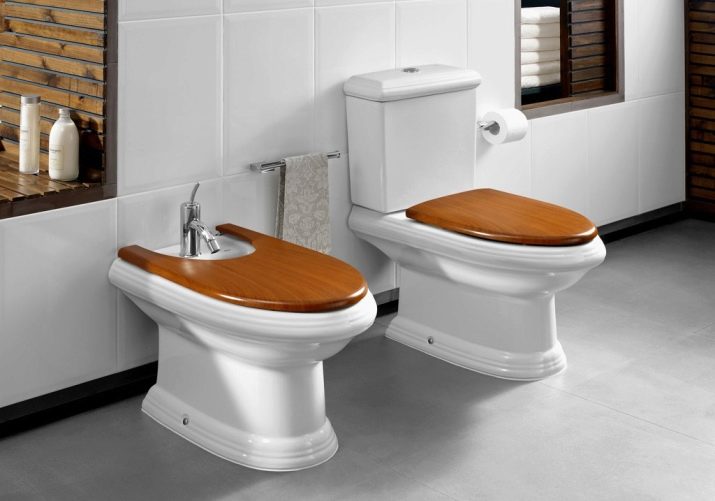
The following video will help you choose a toilet.








